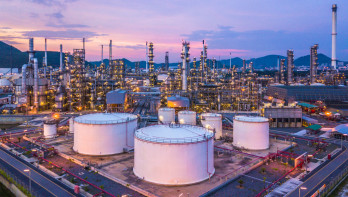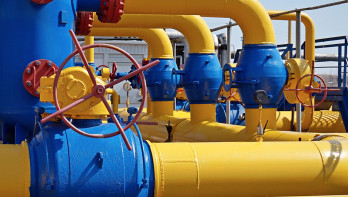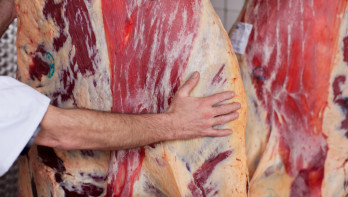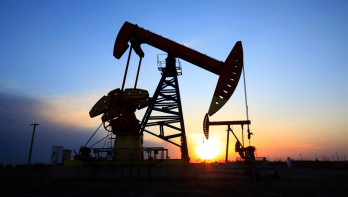Analysis Energy
Solar panels as an addition to wheat balance
Energy and politics go hand in hand. Turkey secured a gas deal with Shell and is trying to strengthen its position as a gas intermediary between Europe and Asia. Meanwhile, Russia pays no attention to American sanctions and continues to invest happily in LNG. There are opportunities for farmers in the field of sustainable electricity. Agriculture can play an important role in both food and energy security, and one does not exclude the other.
The provisional ceiling in the gas market seems to be around €40 per MWh. In early August, there were only two days when the TTF exceeded that level. There seemed to be a new rally in the gas market, but on the first trading day of the new month, the market calmed down again.
On Monday, Turkey signed a deal with Shell for the supply of LNG. The originally British-Dutch oil and gas company will supply gas to Turkey for ten years. "A total of forty shipments, or approximately 4 billion cubic meters, will be delivered annually for a period of ten years starting in 2027," said Turkish Energy Minister Alparsan Bayraktar during the ceremonial signing of the contract. In May of this year, Turkey also signed a ten-year agreement with ExxonMobil for the supply of LNG. ExxonMobil will supply up to 2.5 million tons (approximately 3.7 billion cubic meters) of LNG per year to Turkey. The LNG agreements are not only intended to meet Turkey's own gas demand. The country on the Bosporus aims to become a key player in the storage and trading of gas between both Europe and Asia.
Aphrodite
A bit further south in the Mediterranean Sea, below Cyprus, a consortium of companies has presented plans to develop the Aphrodite gas field. The consortium has submitted plans involving approximately $4 billion to the Cypriot government, as announced by the Israeli company NewMed Energy on Sunday evening on its website. Chevron and Shell are also involved in the project. The gas field contains at least 98 billion cubic meters. The gas extracted will be transported mainly via a pipeline to Egypt, from where it will be further distributed.
In August, Russia exported 2% less gas to Europe compared to July. Compared to August of last year, exports have decreased by 2.3%. This information is based on calculations by Reuters using data from Entsog (the European association of gas network operators) and Gazprom. The conflicts in the Russian region of Kursk could be a cause of the reduced exports, according to Reuters. This province is home to the last hubs distributing gas to Western and Central Europe. Gazprom, which has not published monthly export figures since the beginning of 2023, has not responded to Reuters' inquiries.
Investing in LNG
With LNG exports, the Kremlin is sailing close to the wind. Novatek, Russia's largest LNG producer, is preparing a floating gas storage facility for use as part of the Arctic 2 project. The floating storage Saam (which is on the US sanctions list) is being prepared to receive a gas cargo from the Everest Energy LNG tanker, which is also on the sanctions list. This information is based on ship tracking data from LSEG. Asya Energy, another tanker on the blacklist, has also been spotted in the region. The tracking data does not indicate whether loading or unloading is taking place, but the ship movements suggest that Novatek and the Kremlin are proceeding with their own plans and paying little attention to Western sanctions.
Volatile Electricity Market
The electricity price on the Epex Spot showed significant fluctuations. Sufficient sun or wind can make a world of difference in daily prices. A halving or doubling of the price is not uncommon.
Worldwide, in May and June, more sustainable electricity was generated from solar than from wind for the first time. Data for July and August have not been fully published yet, but as it is summer on the northern hemisphere, Ember, an energy think tank, expects solar power to dominate in those months as well. Ember predicts that approximately 30% more electricity will be produced from wind over the whole year.
Dual Purpose
It is clear that more investment is being made in solar panels than in wind turbines. The installation of solar parks is not without controversy. In some places, solar panels compete with food production. "As Europe becomes increasingly threatened in uncertain times, food security and energy security are absolutely vital. Combining solar panels with agriculture can help farmers contribute to both while keeping their business stable and profitable," writes Paweł Czyżak of Ember.
In the Czech Republic, Hungary, Poland, and Slovakia, where almost a fifth of the EU's agricultural land is located, there are opportunities for combining solar energy and agriculture. For shade-loving berry and fruit species, after installing 'solar canopies' above the crops, fruit yields decrease by 16%, while the solar panels provide 63% of the electricity compared to a conventional setup. In wheat, crop yields are 20% lower with rows of vertically placed solar panels. According to Ember, the combination of solar panels and wheat can generate a yearly profit of €1,268 per hectare, compared to wheat alone, which is a loss-making crop in 2024.




